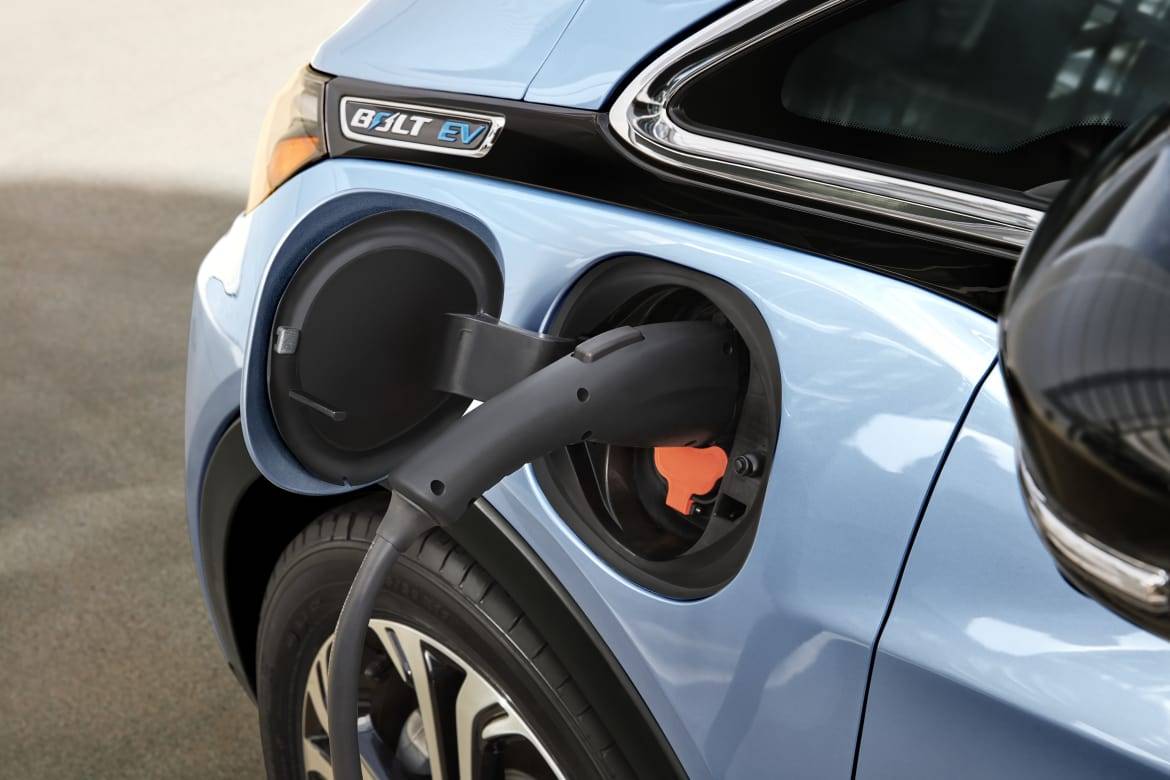5 Reasons Plug-in Cars Have a Bright Future


CARS.COM — Plug-in cars may still seem few and far between on your daily commute, but a new report says they’re progressing toward broader acceptance. The 40-page study, released this month by the University of Michigan’s Transportation Research Institute, says plug-in and battery-electric cars are increasingly competitive with conventional vehicles.
Related: GM Uses Assembly Line for Self-Driving Chevy Bolt EVs
Cars.com obtained the full report, but you can read the abstract here. UMTRI credits recent advancements in a range of areas, plus future trends in vehicle costs and charging infrastructure, as reasons that plug-in cars can replace their plug-free counterparts for most U.S. drivers “in the relatively near future.”
Why? Here are five reasons.
1. People Are Buying More of Them
U.S. shoppers bought about 72,000 plug-in cars through the first five months of 2017, per InsideEVs.com. That’s only about 1 percent of all passenger vehicles sold through the same period, by Automotive News’ count. But sales for such cars are on the rise despite relatively cheap gas. Electricity remains a bit player in transportation-related energy consumption, but UMTRI notes that plug-in sales have ballooned over the past six years. Citing government projections of additional full-electric sales in coming decades, the study expects those sales to keep climbing.
Part of that is because plug-in cars aren’t as pricey as they once were. Relative to the average cost of all new cars, plug-ins have dropped. Citing data from Automotive News and Green Car Reports, UMTRI found the difference in median cost between a conventional model-year 2017 car and a plug-in hybrid is less than $10,000, while the difference between a conventional car and a fully electric car is less than $5,000 — and that’s before any state or federal tax credits.
2. Range Is Way Up
Extended-range cars like the new Chevrolet Bolt EV signal an overarching trend. UMTRI says average range for all EVs has increased to 187 miles, up from 115 miles as recently as the 2014 model year. But that number carries a big caveat: Rather than averaging ranges by model, researchers averaged by EPA-listed battery configurations — so cars like the Tesla Model S and Model X, which have many configurations, influenced the average more than cars like the Nissan Leaf or Fiat 500e, which have one configuration apiece.
“Tesla is somewhat overrepresented in the data in recent years, but we were trying to take a look at the capabilities of all EVs, independent of manufacturer,” Brandon Schoettle, one of the study’s authors, said in an email to Cars.com. “If we looked at performance by make, or by make and model, we would certainly need to collapse (average) those into two values for [Tesla’s] two models.”
On a model-by-model basis, the average range for 2017 model-year electric cars is really 141 miles, a Cars.com analysis shows. But UMTRI’s thrust still applies, as the model-by-model average in 2014 was 98.1 miles. Meanwhile, the battery range for plug-in electric cars has stayed about the same over that span — still 26 miles, by UMTRI’s tally.
3. Batteries Are Improving
Citing multiple studies, UMTRI says heavier batteries have approximately 1/88th the energy density by mass of gasoline. But other studies suggest that if that density were to improve by a little more than double, electric cars could “generally replace” their conventional counterparts for most U.S. drivers, the report says — and that could happen as soon as 2045.
At the same time, batteries are getting cheaper. The cost per kilowatt-hour fell 80 percent between 2009 and 2015, then fell another 20 percent from that in 2016. Several studies expect them to fall even further in the years to come.
Nowhere does this become more apparent than with charging times. Despite the increased range for EVs, charging times have converged in recent years with plug-in hybrids. The latter group still charges faster, but UMTRI notes that EVs have improved to less than double the charge time, on average, versus plug-in hybrids, or 4.8 hours compared with 2.8 hours on 240-volt (Level 2) chargers.
4. Charging Infrastructure Is Growing
Citing government data, UMTRI says U.S. drivers now have access to some 16,000 public stations and 43,000 outlets. Stations have doubled since 2014 and increased eightfold since 2011, UMTRI says — though they’re still few compared to the country’s 112,000 or so gas stations. About 80 percent of public charger connections are Level 2, while 13.1 percent are DC fast-chargers. The remainder are Level 1 (as in, household-style outlets) with a smattering of inductive chargers.
5. Electric Cars Are Cheaper to Operate
Citing government data, UMTRI says the average cost to charge a plug-in car is equivalent to paying $1.21 per gallon of gas — more than a dollar less than the real cost of gas. UMTRI says the government projects that to increase less than 50 cents a gallon-equivalent over the next 30 years versus an increase in gasoline costs of $1 per gallon.
Put another way: In 2050, the government projects the cost to charge a plug-in car as equivalent to paying less than $1.50 per gallon of gas, while that gallon of gas will run more than $3. Prices are likely to fluctuate less, too: Between 2000 and 2017, the price of electricity fluctuated 62 percent, UMTRI notes. The price of gas, by contrast, fluctuated 253 percent.

Former Assistant Managing Editor-News Kelsey Mays likes quality, reliability, safety and practicality. But he also likes a fair price.
Featured stories



